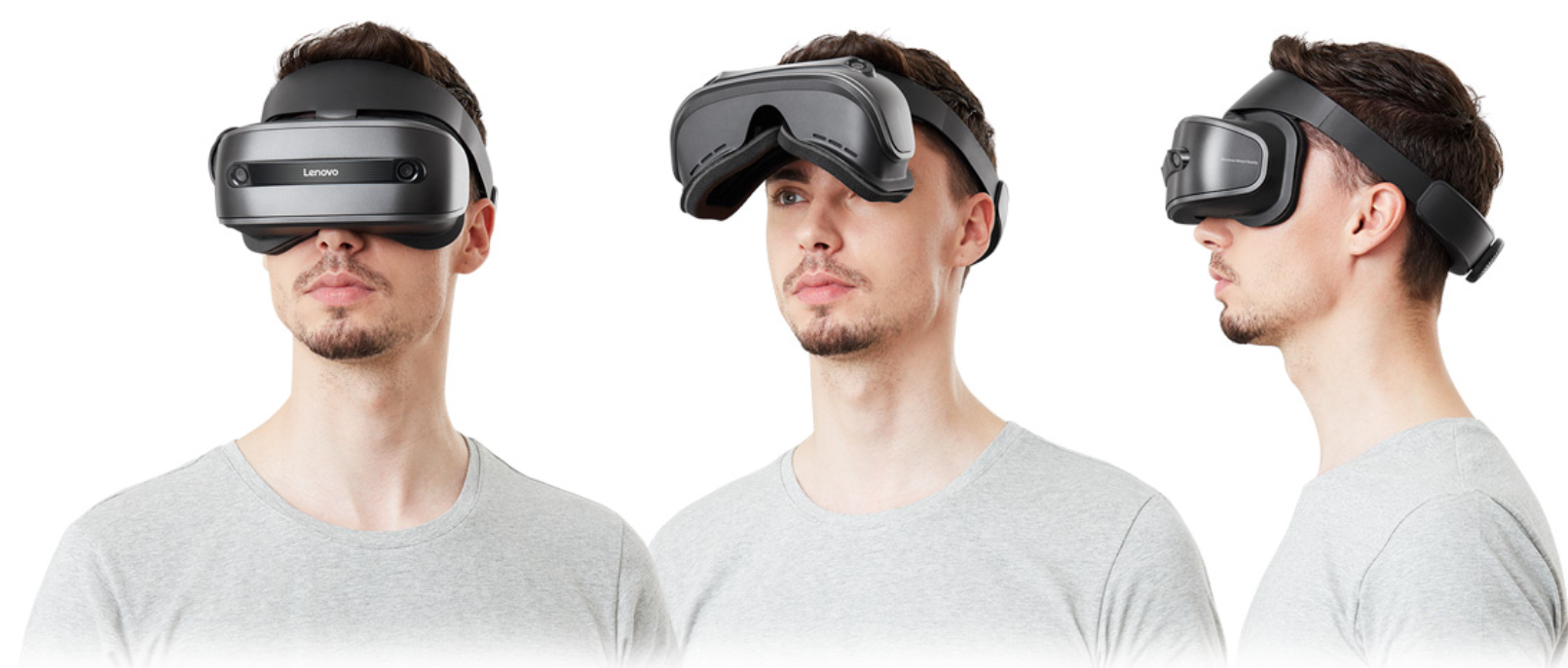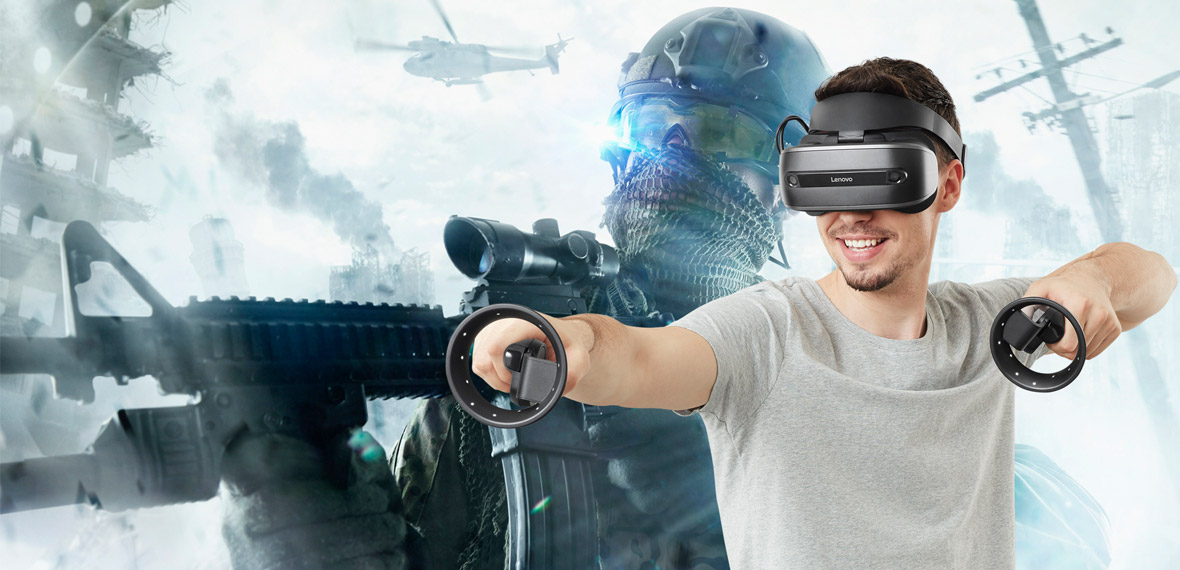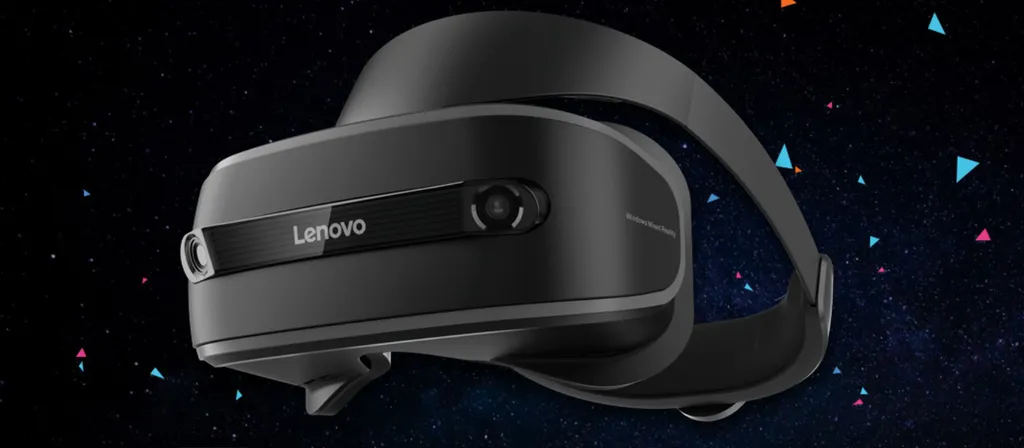Price is one of the biggest barriers to VR adoption right now. I’ve never met anyone that tried VR and wasn’t blown away by it, but you’d be hard-pressed to just ask a random person on the street and have them understand the difference between the HTC Vive and Oculus Rift. We’re just not there yet as an industry.
Much lower down the list of reasons why most people aren’t buying VR yet is the complicated mess that setup can be. The Vive asks you to set up laser-emitting base stations in opposite corners of your room and the Rift requires at least two cameras to use the headset with the Touch hand controllers, but preferably three or four for true roomscale tracking.
The Windows Mixed Reality line of VR headsets aims to address both of those issues head-on. The price is much lower coming in at just around $400 – $500 for the headset and controllers with much lower system requirements and there’s no complicated setup needed. All you do is plug in the USB and HDMI cable and you’re good to go. That’s it. The internal cameras on the front of the headset do the rest.
However, there are a bunch of these headsets on the market now. How does the Lenovo Explorer compare to the HP, Acer, Samsung Odyssey, and others?
Let’s find out!

Design and Optics
The first thing you’ll notice about the Lenovo Explorer is that it’s stylistically very similar (if not exactly the same in some ways) to the HP Windows VR headset. It has the same black design with a flip-up visor and sleek, modern look.
All of the Windows VR headsets we’ve seen so far use the same visor design, similar to Sony’s PSVR, which typically results in a much more comfortable fit. There is less pressure on your head and less weight crammed against your face. A knob on the back can be used to tighten the headset once it’s on and the padding all around the headband helps keep it comfortable for extended periods of time.
However, the trade-off for the headset not fitting as snugly is a slight downgrade in visuals. Since the lenses aren’t quite as close to your eyes while wearing the Lenovo Explorer, the sweet spot in the middle (where the visuals are crisp and clear) is much smaller, which can result in a feeling of blurriness around the sides and in your peripheral vision. In the sweet spot in the very center of the lenses the screen door effect appeared to be less than on the Rift or Vive by comparison, but the overall clarity was a narrower range of view.
In terms of specs the Lenovo Explorer is just like the vast majority of its other Windows VR counterparts. The controllers, while branded differently, are actually the same as well. For all intents and purposes you could go read our review of the Acer Windows VR headset and the only real difference is how the thing fits on your face and looks on the outside. Otherwise, they’re virtually identical.

Tracking and Impressions
Once you move past the device itself, that’s when it becomes more of an evaluation of the Windows VR platform than it is of the headset as a piece of hardware. It fits fine, the controllers are nice, and it’s easy to use — so all of that surely earns it a few points.
The base form of interaction is the Windows VR (or Windows Mixed Reality) portal where you can launch Windows VR apps and even access your desktop. The Windows store has a decent number of VR titles already, such as Superhot VR and Arizona Sunshine, but it’ll be even better once more original content releases there.
The real highlight though is that SteamVR support is finally enabled, albeit in a preview mode at the moment. We’ve already confirmed games like The Lab’s Longbow and even DOOM VFR will work as well. However, it is worth noting that some of the colors are a bit washed out in some Steam content when compared to how it looks on Vive or Rift.
Controllers get the job done, but I’d be lying if I said they were as reliable as Oculus Touch or the HTC Vive wands. If the headset was turned away from the controllers or they moved too quickly then that would dip them out of sync. Having both an analog stick and trackpad on one controller makes the Windows VR set the most versatile on the market, but not necessarily the best. Reaching the sticks or trackpad can feel a little awkward, at least for my hands, and they don’t feel as sturdy or well-made as the Vive wands. The stick is also much smaller and less responsive in comparison to the Touch controllers.
For more details on how the controllers felt, tracking accuracy, or additional information on the launch library, you can read our more detailed Acer Windows VR headset and platform review too.

Conclusion
Ultimately whether or not you should get a Lenovo Explorer headset comes down to a ton of small questions. First, if you own a Rift or Vive already then I’d say no, don’t get a Windows VR headset. The Windows VR platform offers next to nothing in and of itself and unless you travel and change rooms a lot there is no need for a Windows VR headset.
Second, the price is much more attractive if you have a computer that already meets the specifications, but if you have a Rift or Vive already, there just isn’t a point to having one.
Finally, the design. While the Acer with controllers is a whole $50 cheaper, you lose out on some significant padding which aids the comfort considerably. It doesn’t sound like a very big deal, but it makes all the difference in VR.
Is the Lenovo Explorer Windows VR headset right for you? Only if you can run it and don’t have a better one already.
Let us know what you think down in the comments below!



























